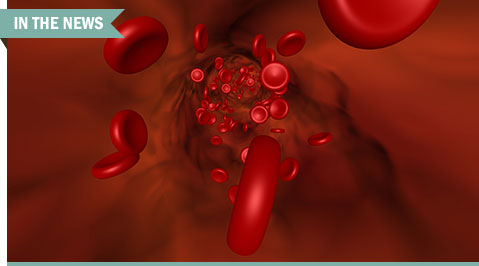 Image credit: Luk Cox/Thinkstockphotos.com
Image credit: Luk Cox/Thinkstockphotos.com
Precision medicine has made inroads in breast cancer treatment, according to one study published in Nature Communications. Using liquid biopsy to collect circulating tumor DNA (ctDNA) from a 42-year-old woman with invasive ductal carcinoma, researchers were able to get a “real time” accurate picture of tumors as they evolved.
“Our findings empirically show that ctDNA analysis from blood samples allows us to detect cancer mutations from multiple different tumor sites within a patient and track how each of them responds,” said Muhammed Murtaza, MD, co-director of the Translational Genomics Research Institute’s Center for Noninvasive Diagnostics (TGen), and one of the study’s lead authors, in a statement.
Liquid biopsies are useful in that they’re less invasive and expensive than conventional tissue biopsies and easier to collect, making it possible to draw samples over frequent intervals and provide real-time information on a cancer’s progression, according to TGen’s statement.
The key objective of this proof-of-principle study was to compare tumor DNA in biopsies with ctDNA in the blood, to see how closely the two methods matched up.
The patient’s cancer at the time of the study had metastasized to other parts of her body, including her brain, chest, liver, backbone, and left ovary. She had received a variety of treatments during her illness, including chemotherapy and surgery, but eventually died. Researchers over a 3-year period collected eight surgical tumor biopsy samples and nine blood samples from the patient, including samples from a research autopsy. The biopsy results were compared against the blood samples—which involved studying tiny DNA fragments from dying tumor cells in the blood.
They found that ctDNA blood samples were just as proficient as the biopsies in tracking cancer mutations as the disease spread, and identifying tumor sites that didn’t respond to treatment. The results validated the utility of ctDNA blood analysis in accurately monitoring evolving cancer tumors.
“Our results show that ctDNA, collected through liquid biopsies, provides a dynamic sampling of cancer cell alterations, reflecting the size and activity of distinct parts of the tumor,” said Dr. Murtaza.
The next step is to see if the liquid biopsy method would work in other patients and cancer types, “but this is an exciting first step,” noted Carlos Caldas, PhD, senior group leader at the Cancer Research UK Cambridge Institute, and another of the study’s authors, in a statement.
Research efforts are already underway to apply this method to patients in clinical settings.